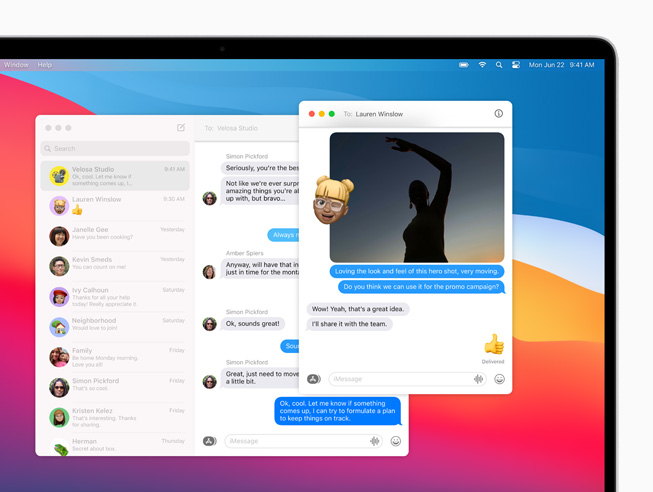Your Apple ID is the account you use to access Apple services like the App Store, Apple Music, iCloud, iMessage, FaceTime, and more. It includes the email address and password you use to sign in as well as the contact, payment, and security details you use across Apple services. Apple takes the privacy of your personal information very seriously and employs industry-standard practices to safeguard your Apple ID.
From the Apple menu in the corner of your screen, choose About This Mac. You should see the macOS name, such as macOS Big Sur, followed by its version number. If you need to know the build number as well, click the version number to see it. Which macOS version is the latest? License agreement for the apple san francisco font for ios, os x and tvos application uses only. Please read this software license agreement ('license') carefully before using the apple san francisco font (defined below). By using the apple font, you are agreeing to be bound by the terms of this license.
Note: The headings on this list indicate the Macintosh System bundle names; the bullet points indicate the version of the System File included in that bundle. This is to make it clearer for people searching for specific bundle versions as opposed to System File versions. Finder File versions are not indicated. 1 Classic Mac OS 1.1 Macintosh System Software (0 - 0.3) 1.1.1 System File 1 1.1.2. An Apple digital badge is an online representation of an outcome or achievement. It’s a secure, shareable credential. Apple badges adhere to the Open Badges Specification, which is managed by the IMS Global Learning Consortium for recognizing and validating learning. Eligibility to earn a badge varies by geographical area and is determined. The first official public version of Mac OS X was launched by Apple on March 24, 2001. It wasn't a success at first, but it powered the Mac through the next 19 years until macOS Big Sur.
Here are some of the best practices you can follow to maximize the security of your account.
Use a strong password for your Apple ID
Apple policy requires you use strong passwords with your Apple ID. Your password must have eight or more characters and include upper and lowercase letters, and at least one number. You can also add extra characters and punctuation marks to make your password even stronger. Apple also uses other password rules to make sure your password isn't easy to guess.
If you aren’t sure if you have a strong password, visit your Apple ID account page to reset your password as soon as possible.
Make the answers to your security questions hard to guess
Apple uses security questions to provide you with a secondary method to identify yourself online or when contacting Apple Support. Security questions are designed to be memorable to you but hard for anyone else to guess. When used in conjunction with other identifying information, they help Apple verify that you are the person who is requesting access to your account. If you haven't selected your security questions, visit your Apple ID account page to set them up.

Protect your account with two-factor authentication
Apple offers an improved security method called two-factor authentication that’s designed to ensure that you’re the only person who can access your account, even if someone else knows your password. When you enter your Apple ID and password for the first time on a new device, we’ll ask you to verify your identity with a six-digit verification code. This code is displayed automatically on your other devices, or sent to a phone number you trust. Just enter the code to sign in and access your account on the new device. Never share your password or verification code with anyone else.
If you use iOS 11.3 or later on your iPhone, you might not need to enter a verification code. In some cases, your trusted phone number can be automatically verified in the background on your iPhone. It’s one less thing to do, and your account is still protected with two-factor authentication.
Two-factor authentication is built directly into iOS, macOS, tvOS, watchOS, and Apple’s websites. You can use two-factor authentication with your Apple ID if you have a device that's using the latest iOS or macOS, or if you have access to a web browser and a phone number. Two-factor authentication is the default security method for some new Apple IDs created on iOS 10.3 or later and macOS 10.12.4 or later.
If you don’t have devices that can be updated to iOS 9 or later, or OS X El Capitan or later, you can set up two-step verification for your Apple ID instead.
You need two-factor authentication to use certain features that require improved security.
Check for encryption and SSL
All web pages where you can view or change your Apple ID use Secure Sockets Layer (SSL) to protect your privacy. In Safari, look for in your browser when accessing your account at your Apple ID account page to know your session is fully encrypted and secure.
What Does Mac Mean? - Definitions For Mac
Employee privacy and security policies
In addition to strong passwords, encryption, and other technology, Apple has strict policies and procedures in place to prevent unauthorized access to your account. Without proof of your identity via a temporary Support PIN and other carefully selected criteria, Apple Support can't help you perform any actions on your account. These policies are audited and reviewed on a regular basis.
Other tips for keeping your account secure
Good online security requires a combination of practices by companies using Internet services and informed behavior by users. Below are some tips to follow to maximize your security when using your Apple ID and other online accounts.
Password tips:
- Always use a strong password.
- Never use your Apple ID password with other online accounts.
- Change your password regularly and avoid reusing old passwords.
- Choose security questions and answers that can't be easily guessed. Your answers can even be nonsense as long as you can remember them. For example, Question: What is your favorite color? Answer: Mozart.
Account tips:
- If you abandon an email address or phone number associated with your Apple ID, be sure to update your Apple ID with current information as soon as possible.
- Set up two-factor authentication for your Apple ID to add an extra layer of security to your account and eliminate the need for security questions.
- Avoid phishing scams. Don’t click links in suspicious email or text messages and never provide personal information on any website you aren’t certain is legitimate. Learn how to identify phishing attempts.
- Don’t share your Apple ID with other people, even family members.
- When using a public computer, always sign out when your session is complete to prevent other people from accessing your account.
Never provide your password, security questions, verification codes, recovery key, or any other account security details to anyone else. Apple will never ask you for this information.
If Apple Support needs to verify your identity, we might ask you to generate a temporary Support PIN. We'll only ask for this information over the phone after you contact Apple Support for help.
Learn more
Learn what to do if you think your account information has been compromised. If you need more help, contact Apple Support.
FaceTime isn't available in all countries or regions.
Get the details, frameworks, and tools you need to use system fonts for Apple platforms in your apps. These typefaces offer the control and flexibility to optimally display text at a variety of sizes, in many different languages, across multiple interfaces.
SF Pro
This sans-serif typeface is the system font for iOS, macOS, and tvOS, and includes a rounded variant. It provides a consistent, legible, and friendly typographic voice.
SF Compact
This sans-serif typeface is the system font for watchOS, and includes a rounded variant. It suits a wide range of content and is easily legible in a variety of contexts.
SF Mono
This monospaced variant of San Francisco enables alignment between rows and columns of text, and is used in coding environments like Xcode. It supports Latin, Greek, and Cyrillic scripts and contains six weights in upright and italic.
New York
This all-new, Apple-designed serif typeface is based on essential aspects of historical type styles and is designed to work on its own as well as alongside San Francisco.
Human Interface Guidelines
Read the Human Interface Guidelines to learn how to use these fonts in your app on Apple platforms.
Videos
Gain insight into typographic principles and how they apply to the San Francisco fonts, the result of a deep collaboration between design and engineering teams. This typeface defers to the content it displays to give text unmatched legibility, clarity, and consistency.
Tools and Frameworks

Use the latest frameworks in Xcode to integrate dynamic text handling and typesetting capabilities into your app.
UIKit
UIKit provides custom text management and rendering on iOS, macOS, watchOS, and tvOS.
AppKit
AppKit provides font selection, text processing, and rendering for macOS.
Mac OS X 10.0 (Cheetah)
Core Text
This text engine and API for Apple platforms provides sophisticated text handling and typesetting capabilities for managing adaptive user interfaces.
SF Symbols
SF Symbols provides over 2,400 configurable symbols that integrate seamlessly with San Francisco.
Apple Font Tool Suite
This suite of command-line tools includes an installer package, tutorial, user documentation, and reference.
TrueType and AAT
Development
Get specifications for the TrueType font format and the Apple Advanced Typography (AAT) Font Feature Registry for advanced font rendering.
